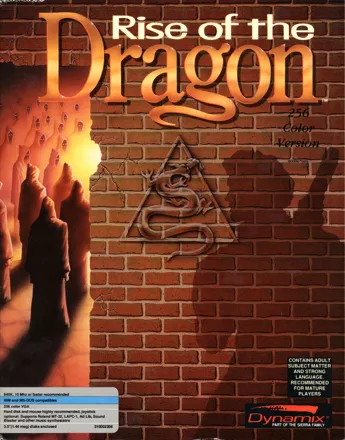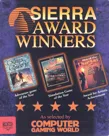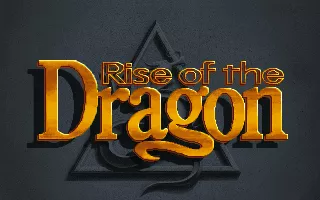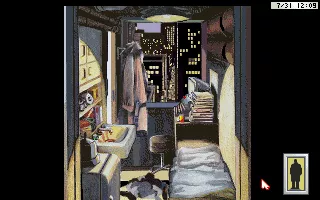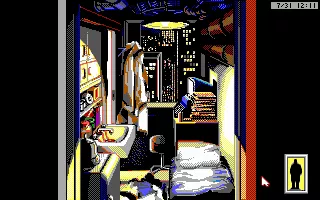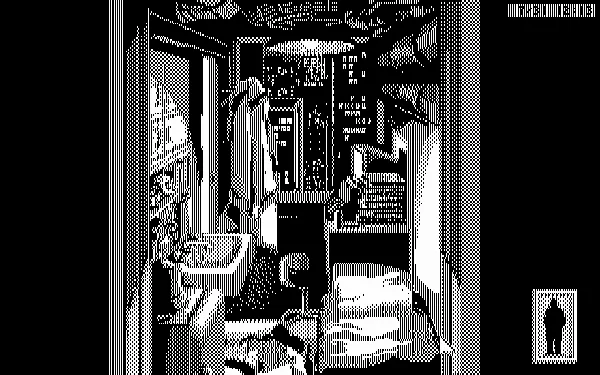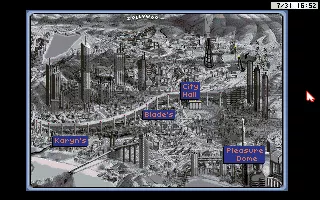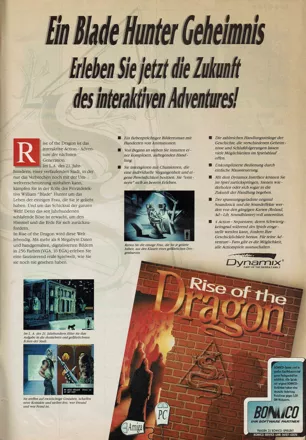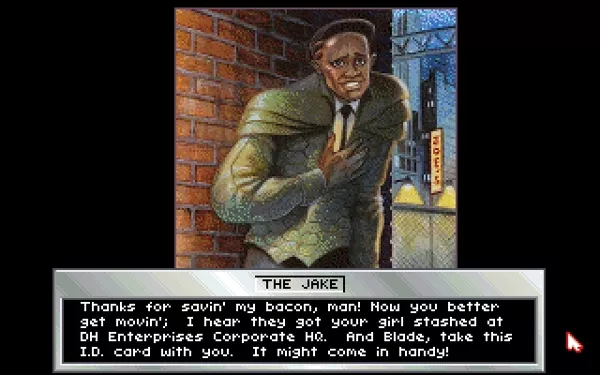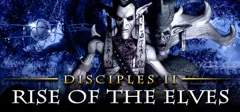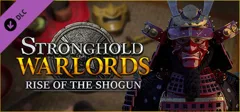Rise of the Dragon
Description official descriptions
The year is 2053, and Los Angeles has turned into a grim place ruled by crime and corruption. William 'Blade' Hunter is a private detective who once was a police officer. He is asked to investigate a horrible murder of the mayor's daughter, whose body was mutilated. As Hunter begins to search for clues that would help him solve the crime, he uncovers a conspiracy involving a deadly drug and a powerful criminal syndicate behind it.
Rise of the Dragon is a futuristic first-person adventure game. The game's visuals are reminiscent of a comic book, with digitized photos of actors and hand-painted backgrounds. Unlike most other adventure games of the time, it relies less on inventory puzzles and more on specific choices made by the player. The game has an internal clock and requires the player to plan the protagonist's moves ahead in order to be in the right place at the right time. Dialogues with multiple choices are utilized as a gameplay tool; a wrong choice will often lead to a premature end of the adventure.
There are two side-scrolling action sequences in the game; both can be bypassed without penalty if the player character dies several times in a row. The Sega CD version does not allow the player to skip these sequences. In addition, it uses a different color palette with a greenish tint, and has voice-overs for the dialogues.
Spellings
- ライズ オブ ザ ドラゴン ~ブレイド・ハンター・ミステリー~ - Japanese spelling
Groups +
Screenshots
Promos
Credits (DOS version)
19 People (17 developers, 2 thanks) · View all
| Designer and Director | |
| Art Director | |
| Conceptual Art and Characters | |
| Game Development System | |
| Artists | |
| Programmers | |
| Arcade Programming | |
| Audio Director | |
| Music and Sounds | |
| Original Score | |
| Dialogue and Text | |
| Original Story | |
| Quality Assurance Manager | |
| Documentation Design, Layout and Writing by | |
| Special Thanks to | |
| [ full credits ] | |
Reviews
Critics
Average score: 77% (based on 38 ratings)
Players
Average score: 3.8 out of 5 (based on 90 ratings with 12 reviews)
Not as good as it claims to be
The Good
I admit I am not very much impressed by this game, but I am addicted to it, more than my REALLY favourite games. From time to time I want to explore its micro-pseudo-virtual real-time world, watch the time as it passes, and the beautiful sceneries.
What I like is mainly its atmosphere. First of all I like Blade Hunter. He, as well as the story itself, are cliches, but it seems like he jumped out from a classical story... a futuristic detective archetype, as I would imagine him: trench coat, ponytail, scar on a cheek, and the replies he gives (most of them chosen by you) are really in accordance to his personality. Blade Hunter IS a well-developed character, no matter how small is the game, no matter that won't see him again in a future game.
Although I don't really enjoy, I appreciate that Dynamix attempted to create a self-efficient game world, as realistic as possible, with distances, time that passes, day night circles, characters with their own personalities and different ways to talk to them, alternative solutions and alternative endings. Although the designers didn't take fully advantage of its full potential, sometimes you have the feeling that you are actually visiting that micro-world: everyone has a vidphone device (note that there is a [useless] 'cellular vidphone in the hovercar. A red herring, but also a touch of realism.), everyone needs chocolate, everyone is lost in the dystopian future, and lost according to his own character.
The manual is something that everyone would like: an imaginary magazine featuring a comic with Blade, and except that, advertisements, articles, mail, that put you in Blade's world, with a lot, a lot of humor.
As I said, despite small, the game is quite deep. After 10 years, I just learned that the game doesn't end when you lock yourself out, forgetting your ID in your house. Actually you don't really need it! There is a way to enter your apartment without it and I just learned the way!!! I am sure there are some other 'secrets' that I haven't seen in any walkthrough... yet
There are also some touches of reality, like the name of the person you talk to, that appears in the dialogue box (if you know it), or not (if he hasn't introduced). However this isn't actually useful in the gameplay or the plot development.
I also like how arcade can interact with the rest of the game. Having used too many mini-bombs will prevent you from using them in the arcades. If you manage to claim some useful stuff, like the vest, will make the arcades easier. And no, I don't think that they are THAT frustrating as some think
The Bad
As I said, the game doesn't really takes advantage of a REAL virtual reality it claims to represent. Apart from some alternative solutions to puzzles, and various ways to approach persons or situations, there are no real plot branches.
For example offering Karyn flowers will trigger the date/dinner cutscene. But the plot won't evolve differently from the gamer who missed the opportunity.
The characters of the bar are an example. You can just play with them, try some alternate responses to see how they react. But all this is possible, during day one. After that, you can't 'explore' or play any more and it won't affect the plot (apart that you can be led to a dead-end with a wrong reply).
Also, in dialogues the game tries to be so realistic, that it manages to be unrealistic. Each dialogue is unique, a taken or lost opportunity. You can't retry a dialogue, even if in reality you wanted to ask a question you missed before. In the game, the question will be lost for ever
The manual tries to convince you how important a feat to make a 'virtual reality' game it was.
Some things will be used once, and they need their appropriate time and place. While some can be used to pass alternatively through some dead end (if you missed an opportunity earlier), others, like the Napent, won't help you pass through other difficult situations. The Napent can be used only once, or other times FOR FUN without changing the story. Not as versatile as I'd like.
Time passes realistically, indeed, but only to distress you. Almost nothing changes through day and night. Persons will be there always, except the City Hall. Quest for Glory was more realistic! There is no puzzle which you can/must do BECAUSE it's night and everyone would be absent.
Also, some scenery is ugly. The hand-drawn graphics are indeed comic-like, but sometimes they are poor. Blurry, unclear, the rough outlines are not what you'd expect to see in a comic book.
Finally, the arcades, although enjoyable, they are ridiculous. A VGA arcade game with early 80's gameplay: totally unrealistic walk, jump and movements, and slow, slow bullets. The bad guys can be shot once, while you need several shots to die.
The Bottom Line
I think it's worth looking, a classical game with many many good elements. Too bad it was not fully implemented, at least as much as the documentation wanted us to convince it is.
DOS · by Boston Low (85) · 2006
The future doesn't look good for LA
The Good
In the late Eighties, a small company called Dynamix created Project Firestart, an action/adventure game for the Commodore 64. It had features that were uncommon at the time, including cinematic sequences, video images, and action sequences. All three of these game mechanics formed the basis for Rise of the Dragon, their first MS-DOS adventure game.
Anyone who have seen Blade Runner will know that Dragon shares many similarities with the movie, in both story and style. The only difference is that we are investigating what happened to the mayor's daughter, not tracking down Replicants who pose a threat to society. Maybe it is also a coincidence that your character is also named Blade, and that the game is set in Los Angeles?
The games makes use of an internal clock, which updates every five seconds and is on the top-right of the screen, above your inventory. Like in real life, events happen at certain times. The inventory also has a clock, but with buttons that let you go forward a minute or a whole hour. Having these forward buttons is ideal for skipping time because you spend most of the time doing nothing until near the end of the game. Dragon is the only Dynamix adventure game where a clock is visible on-screen as you interact with the environment.
The graphics are quite impressive. All of the environments look as if they are taken right out of a comic book. The only difference is the animations in most of the environment, some of them, particularly the outdoor environments, blend in with the game's setting (ie: it is always dark and gloomy, no matter where you go or what time of day it is). Beautiful cinematic sequences are scattered throughout the game, and tell the player that something really big is happening. The game's introduction – where we discover what happened to the Mayor's daughter – is superb. Dragon comes complete with a comic book that continues where the introduction left off, where the mayor comes into Blade's apartment instead of contacting him on vidphone.
The realism the developers added to the game is amazing. Nearly everyone you meet remembers what you did to them. There are dialogue branches, and saying the wrong things to your contacts will result in them getting angry, which will jeoparize your chances of getting new leads. Character portraits often accompany the dialogue, and they are complete with facial expressions that reflect the mood they are in.
The music and the sound effects are great, often blending in with what is happening on screen. The game supports popular sound cards at the time, including the Adlib, SoundBlaster, and Roland MT-32. The introduction even contains digitized speech that can only be heard if you are playing with SB. In my opinion, the game's speech is nothing compared to what you hear in the Sega CD version, which does include full speech throughout the game as well.
There are arcade sequences scattered throughout the game, and these are similar to the action scenes in Project Firestart, released one year earlier. These arcade sequences are fun, but the controls need to be getting used to. They also work just like any arcade game – you shoot, jump over things, walk under things, turn off switches, and other stuff. They usually take about two minutes to get through, and it is worth it if you want to see yourself defeat your adversary. If these arcade sequences are too hard, then the game will eventually let you skip them and move on. Dragon gives you the opportunity to save your game before each arcade sequence, and this is ideal if you want a break from all that adventuring and just want to kill some bad guys.
The game can be replayed, especially if you want to take different dialogue branches to achieve the same result. For example, you can cheer your girlfriend Karyn up by giving her some flowers in one game to get a set of keys. Then, in your next game, you can make her angry and still get your keys. Let's say you skip those arcade sequences in one game, but you want to complete them in the next. There are also those alternate paths you need to consider to achieve what you need to do.
The Bad
As I said, you spend a lot of time doing nothing in the game, and the developers could have added more stuff for you to do. Why not do extra stuff at the warehouse instead of just blowing it up, or doing more stuff at other locations?
The Bottom Line
If you played Project Firestart or watched Blade Runner, then you know that the roots of Rise of the Dragon can be traced back to these two titles. With great comic book graphics and excellent sound that blend in with the game's atmosphere, Dragon is sure to please any cyberpunk fan out there. It's worth getting a copy of this game from eBay or other retailer, since it includes a comic book that sets the scene up quite nicely. Out of all the three adventure games Dynamix created, Dragon still remains one of my favorites to this day.
DOS · by Katakis | カタキス (43091) · 2014
One interactive Sci-Fi novel that wont leave you untouched
The Good
The first thing that struck me where the great looking graphics in Blades small but futuristic apartment. The greatly seductive sound of drops hitting a metal sink together with that distant pixel skyline outside the window drags you right into the screen and universe, a mystical and depressive such. The game is built on hand painted still images and is played in real time, witch means that if you have an appointment at 5 and the time is 3 you just have to wait. The storyline was strongly plotted out for you and there where no such thing as dynamic gameplay, but still they manage to deliver the feeling of accomplishment to the player. Throughout the game you encounter several puzzles that are directly tied to the story. The sequence where you sneak down the sewer to redirect some electrical weiring are a master piece.
In short this game with its graphics, sound and music absolutely kidnaps you for a couple of hours and holds you helplessly hostage in they Blade Hunters future universe, you get to live a part of his life.
The Bad
There are a couple of shoot'm up segments in the game that are a total catastrophe. Its blocky steering and inexact shooting gets you extremely frustrated when all you want is to know how the adventure continues. Further more its very short and just as you are about to log on to Ebay to get your self the Blade outfit you´v saved the day and the game is over.
The Bottom Line
An interactive Sci-Fi novel in the Blade runner universe. There are 3 different game types bundled in one. The lined out RPG, the puzzles and the, from the side, shoot 'em up type. Its a typical Hollywood story with a strong atmosphere but a short lifespan. You even play the love life.
Amiga · by Birjer Rosenkrantz (3) · 2005
Trivia
Development
Rise of the Dragon appears to have been coded in Turbo C++.
Messages
Messages hidden in the main executable:
Boy, am I tired. Better get some sleep in about an hour.You have chosen to run the game with only %s bytes of memory! You are on your own!(this is presumably when the user has decided to run the game without enough free DOS memory available)
References
- One of the patrons in the Pleasure dome is named "FU BAR".
- David Wolf makes an appearance outside the Pleasure Dome--he strolls past in a tuxedo if you wait long enough. (David Wolf was the main hero of Dynamix's earlier game David Wolf: Secret Agent.)
- In Heart of China, another game from Dynamix, if you talk to some people in Ho's bar, some people will say "Bahumat lives!". A reference to the main villain in Rise of the Dragon.
SEGA CD version
The Sega CD has automatically-converted graphics from the 256-color originals, but (probably due to the Sega's limited color palette and palette restrictions) everything has a green cast. Check screenshots for comparison. Also some things were cut from the game: an ammo clip besides a telephone, all but one strippers in the bar and a sequence in which the protagonist has sex.
Versions
Rise of the Dragon was released in two separate packages for the PC: A 256-color VGA/MCGA version that took up about 7 megabytes, and an EGA/CGA version that, understandably, took up half that size. The 16-color EGA version, on the other hand, has mostly redrawn graphics based on the 256-color originals.
Awards
- Computer Gaming World
- November 1991 (Issue #88) – Special Award for Artistic Achievement
- November 1996 (15th Anniversary Issue) - #83 in the “150 Best Games of All Time” list
- November 1996 (15th anniversary issue) – #12 Most Innovative Computer Game
Information also contributed by PCGamer77
Analytics
Upgrade to MobyPro to view research rankings!
Related Sites +
-
Game Nostalgia
Provides extensive background info for Rise of the Dragon, pictures of the cast, full credits with shots and info about the design team, specific details about the game, various goodies, all musical themes, shots of every location in the game, saved games, a list of reviews, including a "nostalgic "review and tech specs.
Identifiers +
Contribute
Are you familiar with this game? Help document and preserve this entry in video game history! If your contribution is approved, you will earn points and be credited as a contributor.
Contributors to this Entry
Game added by Trixter.
SEGA CD, Amiga added by POMAH. Windows added by Cavalary. Macintosh added by Terok Nor.
Additional contributors: Shoddyan, Sciere, martin jurgens, Patrick Bregger, Starbuck the Third, ZeTomes, Shankao, Kayburt.
Game added March 20, 1999. Last modified January 27, 2024.
